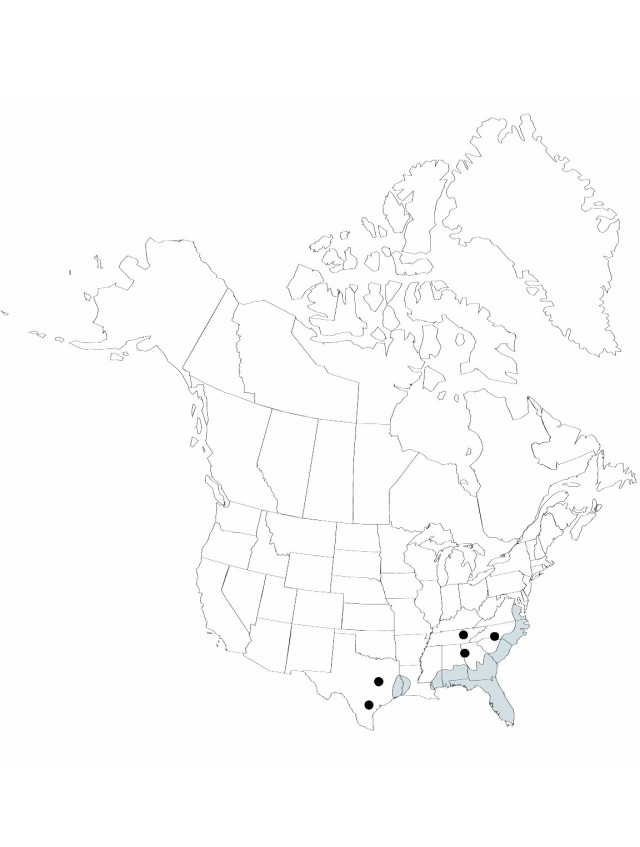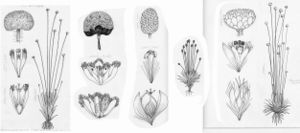Difference between revisions of "Lachnocaulon anceps"
Bulletin of the Torrey Botanical Club 18:360. 1891.
FNA>Volume Importer |
FNA>Volume Importer |
||
| Line 10: | Line 10: | ||
|name=Eriocaulon anceps | |name=Eriocaulon anceps | ||
|authority=Walter | |authority=Walter | ||
| + | |rank=species | ||
|publication_title=Fl. Carol., | |publication_title=Fl. Carol., | ||
|publication_place=82. 1788 | |publication_place=82. 1788 | ||
| Line 16: | Line 17: | ||
|name=Eriocaulon villosum | |name=Eriocaulon villosum | ||
|authority=Michaux | |authority=Michaux | ||
| + | |rank=species | ||
}} {{Treatment/ID/Synonym | }} {{Treatment/ID/Synonym | ||
|name=Lachnocaulon floridanum | |name=Lachnocaulon floridanum | ||
|authority=Small | |authority=Small | ||
| + | |rank=species | ||
}} {{Treatment/ID/Synonym | }} {{Treatment/ID/Synonym | ||
|name=Lachnocaulon glabrum | |name=Lachnocaulon glabrum | ||
|authority=Körnicke | |authority=Körnicke | ||
| + | |rank=species | ||
}} | }} | ||
|hierarchy=Eriocaulaceae;Lachnocaulon;Lachnocaulon anceps | |hierarchy=Eriocaulaceae;Lachnocaulon;Lachnocaulon anceps | ||
| Line 45: | Line 49: | ||
-->{{#Taxon: | -->{{#Taxon: | ||
name=Lachnocaulon anceps | name=Lachnocaulon anceps | ||
| − | |||
|authority=(Walter) Morong | |authority=(Walter) Morong | ||
|rank=species | |rank=species | ||
| Line 60: | Line 63: | ||
|publication year=1891 | |publication year=1891 | ||
|special status= | |special status= | ||
| − | |source xml=https://jpend@bitbucket.org/aafc-mbb/fna-data-curation.git/src/ | + | |source xml=https://jpend@bitbucket.org/aafc-mbb/fna-data-curation.git/src/f50eec43f223ca0e34566be0b046453a0960e173/coarse_grained_fna_xml/V22/V22_154.xml |
|genus=Lachnocaulon | |genus=Lachnocaulon | ||
|species=Lachnocaulon anceps | |species=Lachnocaulon anceps | ||
Revision as of 19:55, 16 December 2019
Herbs, perennial, cespitose, forming domes of rosettes, 15–40 cm. Leaves narrowly to broadly linear, gradually attenuate, 2.5–6(–12) cm. Inflorescences: scape sheaths as long as leaves; scapes filiform, 0.5 mm thick distally, obscurely 4–5-ribbed, pilose from base to apex (s Florida extreme of species glabrous-scaped); mature heads whitish to pale gray, globose to short-cylindric, 4–7(–9) mm wide; receptacle densely pilose; outer involucral bracts becoming reflexed, brownish, oblong to triangular, 1–1.5 mm, apex acute or obtuse, surfaces hairy abaxially and at margins; receptacular bracts dark brown, mostly spatulate, 1.5–2 mm, apex obtuse, distally with white, club-shaped hairs. Staminate flowers: sepals 3, dark brown, narrowly spatulate, 1.5–2 mm, apex acute, abaxially with white hairs; androphore pale, narrowly club-shaped, 1.5 mm, glabrous; stamens 3, appendages 3. Pistillate flowers: sepals 3, pale, oblong to broadly linear, 2 mm (enlarging to 3 mm), apex acute, distal abaxial surface pubescent, hairs white; gynoecium 3-carpellate; stylar column pale, dilated apically, appendages 3. Seeds pale to dark brown, not lustrous, ellipsoid, 0.5–0.55 mm, longitudinal ribs conspicuous, pale, transverse ribs less conspicuous, pattern fine but coarser than in L. beyrichianum.
Phenology: Flowering spring–summer.
Habitat: Moist sands and peats of shores, pine savanna, bog and seep edges, flatwoods clearings
Elevation: 0–400 m
Distribution

Ala., Fla., Ga., La., Miss., N.C., S.C., Tenn., Tex., Va., West Indies (Cuba).
Discussion
Selected References
None.
